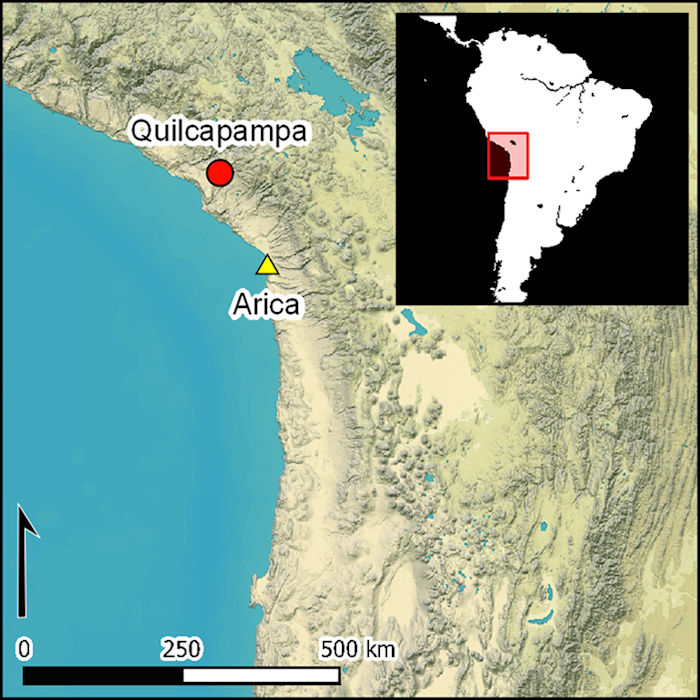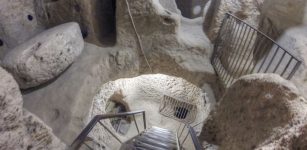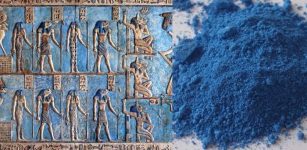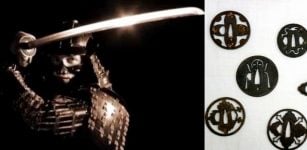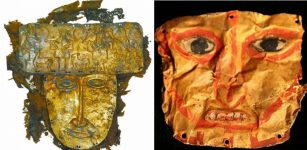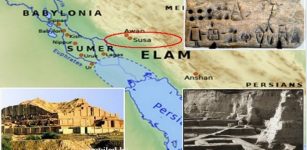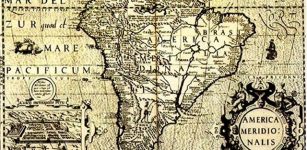Beer And Hallucinogens Reinforced The State Of The Wari Culture
Conny Waters – AncientPages.com – Many ancient civilizations have used alcohol, beer, and hallucinogens.
The world’s oldest paycheck reveals ancient Sumerian workers were paid in beer, and this practice was widespread throughout the ancient world.
In ancient Egypt, workers often received wages were often paid in beer and other supplies and the workmen living in the workers’ village at Giza received beer three times a day as part of their rations. A daily ration could be as much as four to five liters of beer.
Credit: Cambridge University Press
There are also records of poet and the “Father of English literature” Geoffrey Chaucher receiving a yearly salary of 252 gallons of wine from Richard II.
Receiving wages in the form of alcohol has happened on several occasions throughout history, and some modern companies still practice the trend.
Ancient Egyptians also valued beer and used it not only to get drunk but as medicine and payment. Beer was of great importance in ancient Egyptian society and its existence gave women an opportunity to earn extra money.
Some years ago, archaeologists who studied remnants of the Wari culture found that beer was of great importance to these ancient people.
In fact, beer helped keep the empire stable.
A thousand years ago, the Wari empire stretched across Peru. At its height, it covered an area the size of the Eastern seaboard of the US from New York City to Jacksonville. It lasted for 500 years, from 600 to 1100 AD, before eventually giving rise to the Inca.
A recent study reveals more about how beer and hallucinogens influenced the Wari state. As the scientists explain in their paper, “Psychoactive substances often play an essential role in defining political relationships, with hallucinogens and alcoholic beverages representing two distinct potential avenues to altered states of consciousness.
Mass-produced alcoholic beverages permit widespread consumption and are therefore often critical to sustaining political economies by emphasising collective experiences.
Alcohol tends to intensify the shared euphoria of communal events, providing visceral reinforcement of the participating individual’s place in society. By contrast, the specialised knowledge required to safely procure, prepare and consume hallucinogens offers those with this expertise an opportunity to limit their use and secure a powerful role in the political machine.
The psychotropic effects of hallucinogens often separate a few users from a group of non-users, creating a different type of communitas that is based on watching a shared performance.
Hence, while both hallucinogens and alcoholic beverages can be used in communal events, they may facilitate very different political structures.”
According to researchers, “palaeoethnobotanical evidence from the Wari outpost of Quilcapampa strongly suggests that vilca was added to molle beer at feasts. Combining a hallucinogen with alcohol altered the experience of both psychoactive substances and, we argue, provided Wari leaders with a corporate strategy of governance via patron-client feasting relationships.”
Most ancient cultures smoked and inhaled Vilca ensuring that the hallucinogens remained part of an ongoing ritual tradition focused on individual spiritual journeys, but scientists now claim this was not the case with the Wari culture.
Depictions of Anadenanthera colubrina use in the Middle Horizon: left) the Ponce Stele at Tiahuanaco portrays an elite individual holding a drinking cup and snuff tablet (photograph courtesy of A. Roddick); right) a vessel from the Wari site of Conchopata features the tree and its tell-tale seed pods sprouting from the head of the Staff God (illustration courtesy of J. Ochatoma Paravicino).
In their science papers, the researchers write, “Our Quilcapampa excavations have recovered many well-preserved archaeobotanical remains, analysis of which demonstrates that the distribution of vilca was limited to the site’s core area, where it was found in feasting-related contexts.
These vilca seeds would have been collected from tropical woodlands on or near the eastern flanks of the Andes. Communities living in Sihuas could potentially have had access to vilca prior to the Middle Horizon, although evidence to date suggests that most long-distance exchange was confined to the coast.
The Wari state expanded long-distance exchange networks, placing particular emphasis on transporting Amazonian products into the sierra. When Wari llama caravans widened coastal–highland exchanges in the Arequipa region, they also offered greater access to tropical woodland products such as vilca. The Wari affiliation of Quilcapampa’s core families most likely granted them exclusive access to, and control over, vilca in Sihuas. Forthcoming stable isotope analysis will be used to determine the probable regional source of the vilca.
The considerable effort required to obtain the hallucinogen suggests that the use of vilca to access the supernatural through altered states of consciousness was an important part of the Wari political economy. Snuffing or smoking paraphernalia, however, are absent from Quilcapampa and non-existent or rare at other Wari sites while evidence for alcohol consumption is ubiquitous Molle chicha may represent a new mechanism of vilca ingestion.
We argue that the addition of vilca to molle chicha was an effective method for the hosts of Wari feasts to channel its psychotropic effects into a more collective experience. Soaked molle and vilca remains were most frequently associated with the activities that took place within Component II and are probably linked to feasting. This association provides convincing evidence for the creation of vilca-infused molle beer that was then consumed on the occasion of the site’s final abandonment.
In contexts dating to the period prior to the Middle Horizon, vilca has been recovered from snuff-kit pouches and identified as a residue on other snuff paraphernalia. Consuming the substance in this manner induced sharp, powerful psychotropic effects that were more conducive to an individualising experience. The oral consumption of vilca in molle beer changed the experience, most likely creating weaker but more enduring effects that could be enjoyed collectively.
The use of psychoactive substances occurs in virtually all cultures. The powerful effects of hallucinogens often deter widespread use and result in individualising experiences that favour more exclusionary leadership strategies. Vilca-infused molle chicha enabled a more inclusive psychotropic experience in Wari society. For perhaps the first time in the Andes, the consumption of vilca therefore moved beyond those spiritual leaders who communed with the supernatural realm.
Vilca seed recovered from Component II at Quilcapampa (scale in cm; photograph by M. Biwer).
During the subsequent Middle Horizon, we suggest that the Wari practice of combining alcoholic beverages with psychoactive substances represents a fulcrum of Andean political development, wherein larger numbers of participants could collectively experience the effects of a hallucinogen, potentially to contact or become closer to spiritual forces. As seen in the core area of Quilcapampa, Wari leaders hosted intimate feasts focused on the communal consumption of vilca added to alcoholic beverages.
By tying their esoteric knowledge of obtaining and using vilca as an additive to molle chicha, an intoxicant that stimulated communitas, Wari leaders were able to legitimise and maintain their heightened status. These individuals were able to offer memorable, collective psychotropic feasts, but ensured that they could not be independently replicated.
See also: More Archaeology News
By the Late Horizon, greater emphasis would be placed on the mass consumption of alcohol in its own right, without the addition of vilca. In this way, maize beer became the psychoactive substance of choice during the Inca Empire, supporting a different political machine. Shifts in psychoactive use similar to those in the Andes were almost certainly a fundamental part of the political process in other parts of the world.”
Written by Conny Waters – MessageToEagle.com – AncientPages.com Staff Writer

